How to choose an Interior Photographer
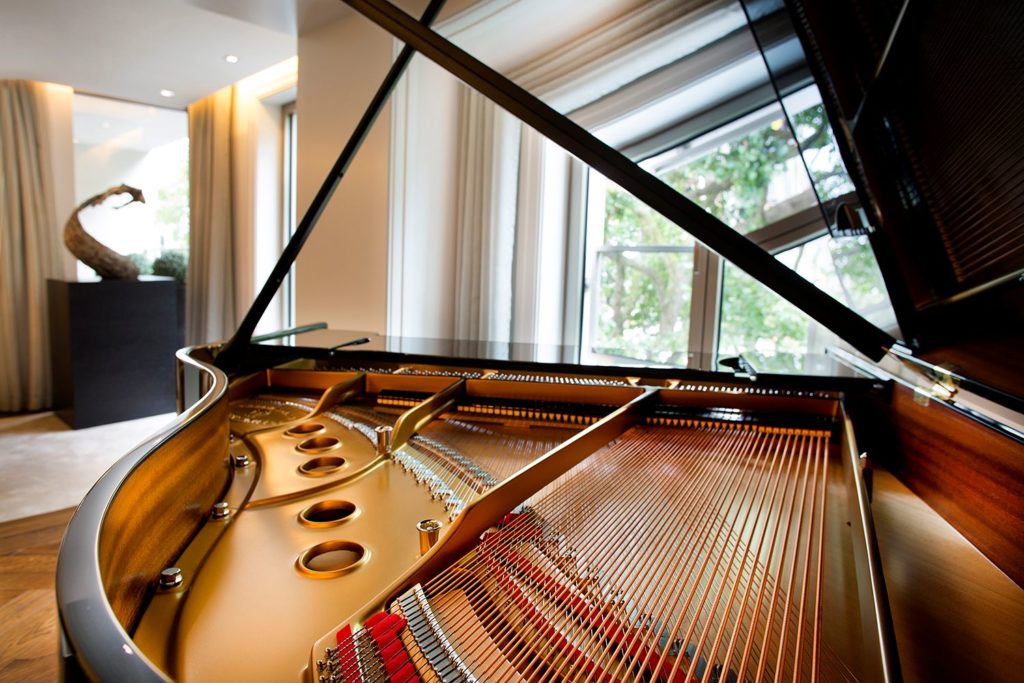
Interior photography, like all photography is a craft. I hope to provide an insight for people who are looking for a photographer to capture their building or space. I will give you an understanding of:
- The equipment that an interior photographer should use.
- What an interior photographer must consider when shooting a space.
- How you can prepare ahead of time.
- What questions you must ask your photographer.
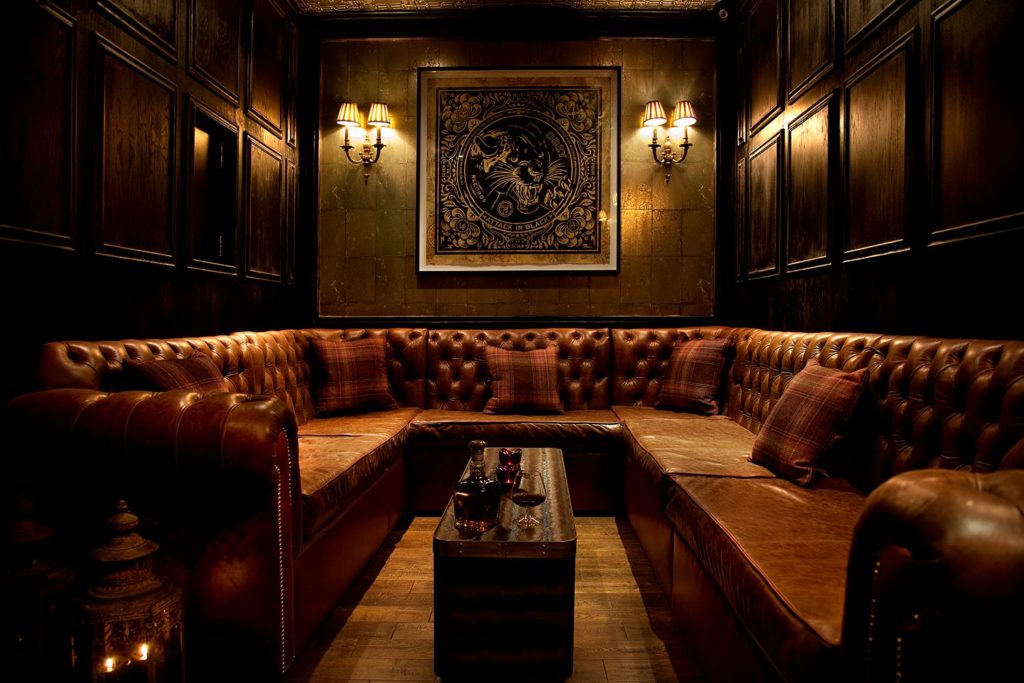
Specialised Knowledge
As is the case for all photography, interior photography is a mix of technical and creative skill. The photographer in each case has to get to know their subject in a short space of time.
The difference between photographing people and inanimate objects is poles apart. Shooting people is about communication, trust and projecting personality. Whilst interiors are photographed in a thoughtful and technical way to balance light and framing to create an atmosphere that is emotive for its purposes.
There are many important things to consider – is it a house or commercial space to sell or rent? An interior designer to promote? An architectural practice to show of their work? Or a commercial working environment with people, products and machinery? Specialised knowledge is vital.
Equipment
Something I have learnt over my 30+ year career is that light levels are often low… so a good tripod and cable release is a vital tool for an interior photographer to ensure there is no camera shake.
When arriving on set, I always consider whether the floor is pristine and not tripod friendly? A helpful tip I use is to cut a slit in tennis balls and put them on the bottom of the tripod legs and lighting stands to prevent any markings on an expensive new floor! I also take off my shoes in such a room as respecting the client’s space is a given.
Having the ‘right’ lenses can make or break an interior shoot. A lens wide enough to be able include the majority of smaller rooms is important for the professional. A 35 mm lens will not be wide enough in many circumstances. I work with quality Canon lenses from 200mm down to 11mm including a macro lens.
Wide-angle lenses can distort vertical and horizontal lines so I will always correct this distortion. This will ensure you don’t see an interior which looks like the walls are collapsing outwards, or to make sure that the object nearest the frame edge doesn’t look as it is falling off the edge of a precipice. Also, a space that looks too wide compared to reality can look misleading.
Preparing for an interior photoshoot
The most helpful way to prepare for interior photography is by making the space as clean and tidy as possible. If you can also ensure the space is as COVID-19 free as possible that is also a bonus. These days I carry an alcohol spray with 70% alcohol. This is good for cleaning small areas of glass too as it evaporates quickly. I also have disposable gloves, over-shoe disposable covers and (of course) masks and alcohol gel. The chances are – the rooms I photograph will be more COVID-19 friendly after I’ve visited. As such, this is a great time to get your interiors photographed!
Bedrooms can look messy if the bed covers or pillows are creased or don’t look perfect. However, I recognise that it can be very difficult to get this to look immaculate so I will take away creases in post-production photoshop work and even out the bed linen.
Below shows a small hotel bedroom before and after postproduction – maintaining the view outside Buckingham Palace through the window, straightening verticals, enhancing the lighting internally and tidying the fabrics:
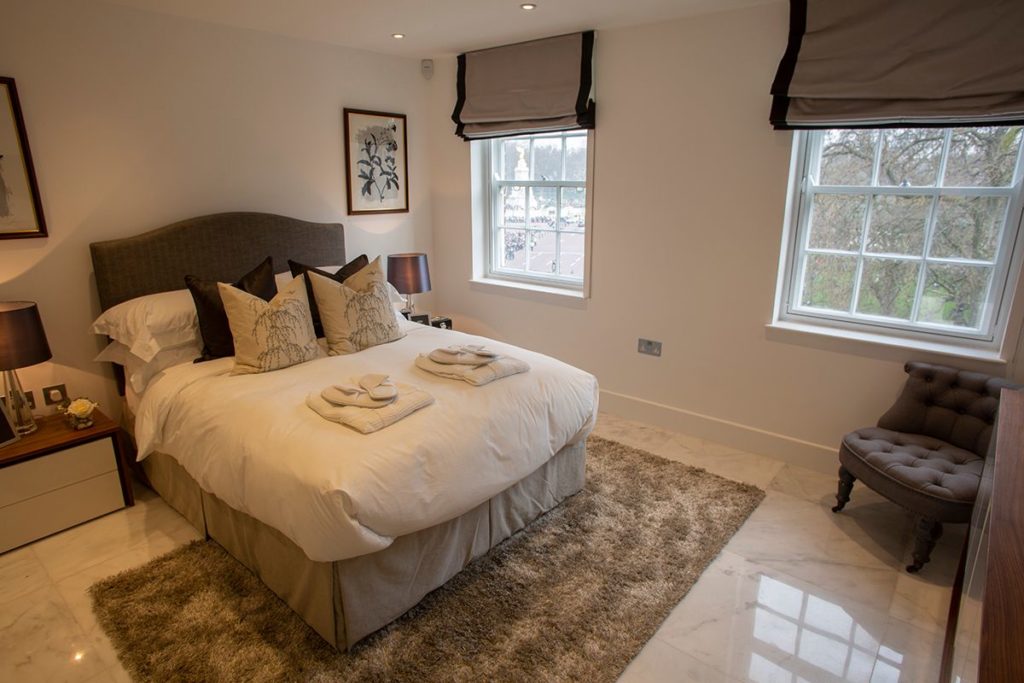
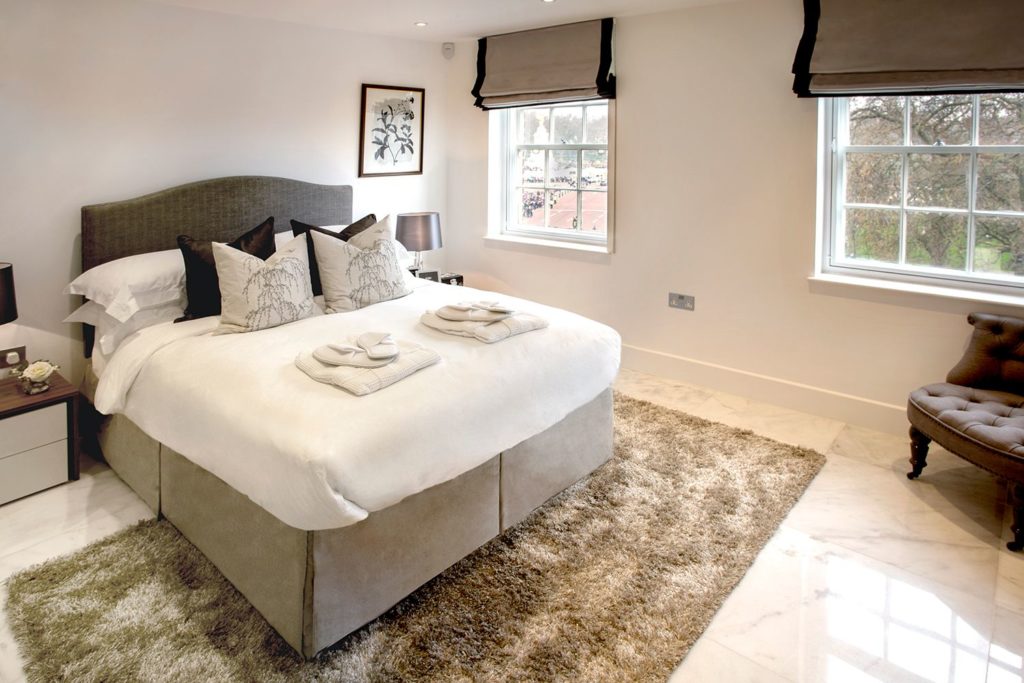
Fresh flowers can enhance a space too if they fit with the look and atmosphere of the room. However, if a room which never has flowers in it suddenly looks like a garden centre, this might somewhat disappoint visitors.
If you would like any people in the images, this can be discussed. Whether these are real clients, staff, friends or models, this can all be organised in advance and I can help with this and give suggestions if required.
If staff are to be in images, it is best to pre-warn them, as not everyone is comfortable being photographed. Of course, I would make them feel as relaxed as possible (something I have a lot of experience in). Plus, I might suggest they bring something else to wear on the day as an option. People in the workplace are not models and welcome any kind of guidance.
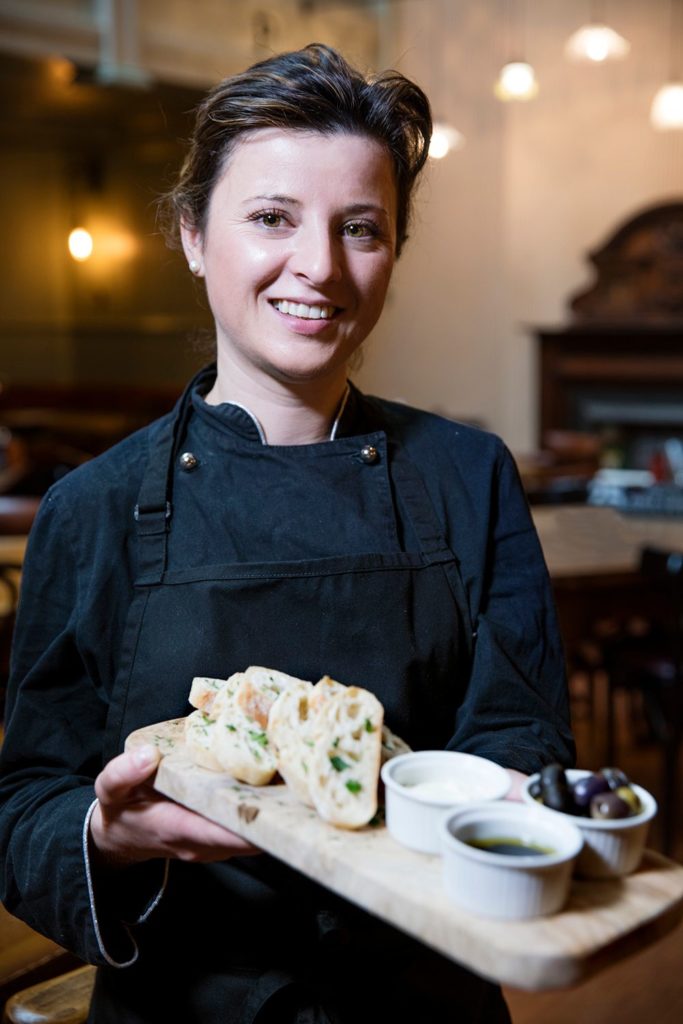
Things to know ahead of the shoot
I will always discuss what type of images you are looking for. How do you want your interior to be portrayed, what is your aim, goal, target audience? What will the images be used for – website, social media, magazine print, billboard? This is relevant when it comes to file size, actual image size and licensing. This all makes a difference to how I will provide the images.
I will always shoot the images at the highest resolution possible (my camera will shoot a full frame **raw single image at over 50 mega pixels) and then I will provide the ideal image file size for its intended use.
Some may want to transform a space from more of a blank canvas to a specific interior. I can help with all of this, giving ideas, or recommending interior stylists/ prop stylists (if requested).
What should you ask an interior photographer
One of the main questions to ask is ‘how long will the photography take?’. It is understandable to think that photographing an interior space would be a fairly quick and easy job. If you have read this far, you will see that it’s more complicated than it looks.
Also ask if the quote includes travel, postproduction, editing or retouching. The ‘behind the scenes’ part of photography that no one sees can take a fair amount of time. Further editing or retouching can be done to perfect the image. This involves experience in post-production work. A good photographer always enhances what they have taken to make a great shot brilliant.
The key factors that should influence your decision
Obviously, budget plays an important part. But be aware that the cheapest will not very often be the best. I would always recommend if you have a set budget, to be completely transparent about it and don’t worry about letting me know. This only helps me to be able to tell you straight away what is possible within your budget and be totally transparent. It is always worth discussing this, so I am aware and talk about what you could do to meet your needs within your budget.
A few factors to look for when looking at a photographer’s interior images are:
- Are all parts of the room appropriately exposed, so parts are not too bright or too dark, so you can see all the detail you would like to?
- Consider the colour temperatures, does it look natural and blend seamlessly?
- Do the rooms look in proportion and in scale? Do they look as if they been photographed on an unsuitable wide-angle lens?
- Have parts of rooms been thoughtfully framed? Not cutting through important features on the edge of the images in such a way it looks awkward or unnecessary?
- Have the little details been taken into consideration? Look to see whether you can notice anything glaringly out of place in the images. It’s important to consider that a photographer could even have edited it out if the detail could not be physically removed?
- Basically, are you happy with what you see? And even if the photographer’s interior images on their website are vastly different to your interior, that is not what is important, but rather that the images show skill, knowledge, craftsmanship, creativity and an eye for detail. Ask yourself – are they of a standard that you would like produced for your own unique interior?
And finally: It is a good photographer’s job to make whatever interior we are photographing look its absolute best and in line with the client’s requirements.
I will always provide images that I find creatively interesting, using my knowledge, expertise and creativity! This is beneficial to you as you will get a range of images that are more than what you could have asked for.
If you would like to discuss how I can help you showcase your interiors, then please get in touch by emailing admin@stephenperry.com
All images are copyright of Stephen Perry Photography
**A bit of technical knowhow:
The raw file is the ‘unprocessed by camera software’ image which the photographer then imports into their own software on their computer after the shoot (such as Adobe Lightroom, Capture One, Camera Raw). This raw file holds data within the image which can then be processed by the photgrapher.
Most people will have heard of JPEGS these days. These are images which have been processed in camera and compressed to reduce the file size. It’s an irreversible (slight) reduction in quality too. JPEG images produced from a professional DSLR or mirrorless camera will still be excellent but the raw file will be a better image to edit, especially if an image is edited and saved a few times.
Raw files do not reduce in quality if saved as uncompressed (TIF) files, however many times they are edited and saved. The final images, after all the work is done will be sent to the client as a JPEG at a size that suits its usage. Online use only requires an image of up to 5mb at 72 ppi (pixels per inch) and a magazine/ print work needs images at a bigger mb size (depending on the final image (physical) size being produced) at (usually) 300 ppi.

Nice article. Wish you would have suggested which lens and the model of canon you use.